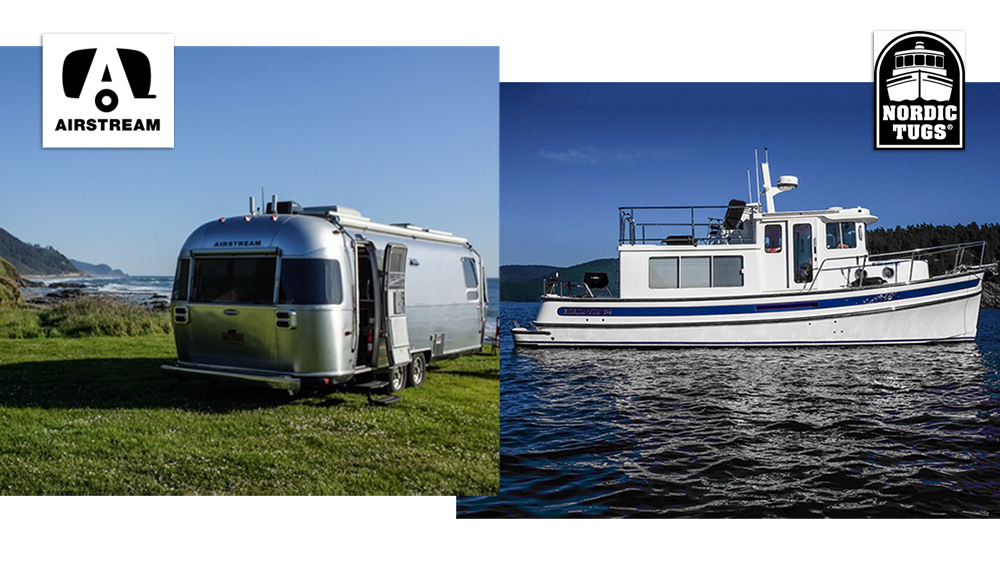We’ve logged almost 700 nights in our Airstream since we purchased it in 2010 (a 2010 27’FB International), and almost 600 nights aboard Airship (2013 Nordic Tug 34) since it joined our family in 2014. We’ve returned to the Airstream for a week of camping on the Oregon Coast (OMG is it ever going to stop RAINING??), and we can’t help discussing the things we find different/better/worse between the interior living space of the two “vehicles”. We aren’t taking into account things like self-propulsion…this is just about the living space design and interior.
Airstream 27FB Plan
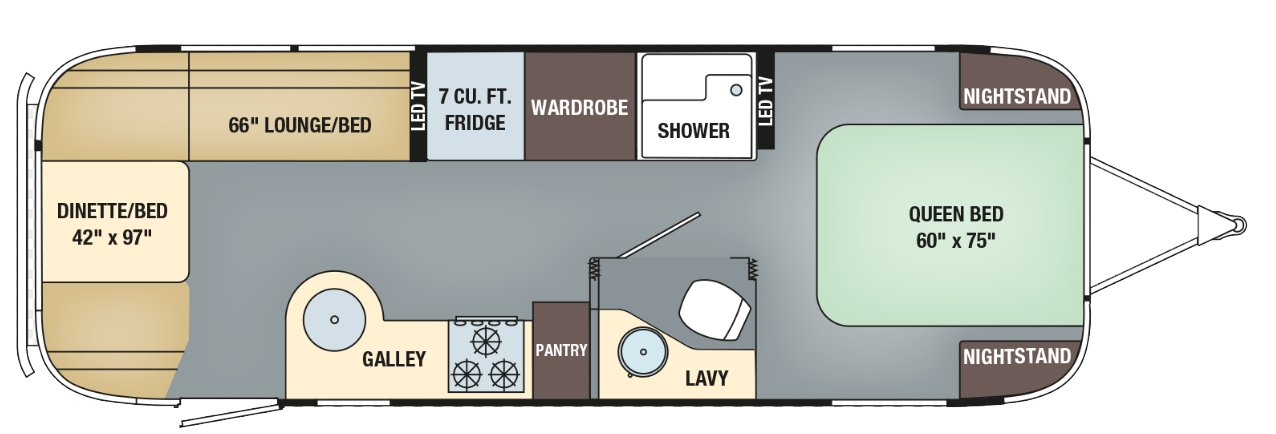
Airstream 27FB Plus Points
- Airstream publishes a much better graphic of its interior layout than Nordic Tugs does 🙂
- There is a LOT of storage.
- Bigger fridge and freezer
- Bigger, separate shower
- Quite a bit more closet space
- The Airstream’s Amana stove/oven kicks the butt of the Force 10 we have on Airship. Sure, it’s not as shiny, but we’ve got three full burners (rather than one fullish burner and one “sorta kinda keep warm” burner), and…a vent-a-hood!
- The heater in the Airstream heats the interior in no time
- Bigger bedroom/master stateroom, in all dimensions
Nordic Tug 34/Airship Plan
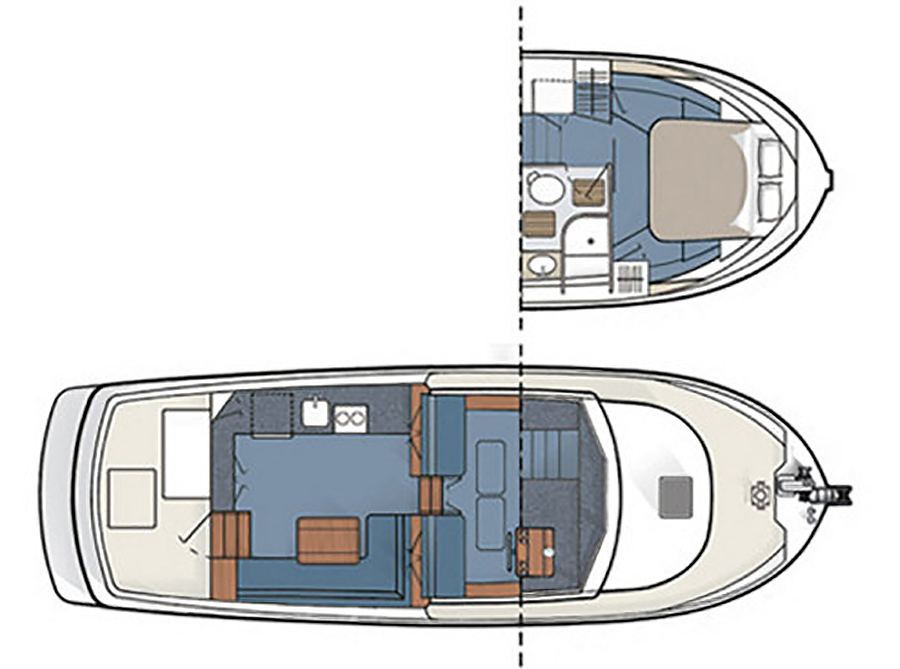
Nordic Tug/Airship Plus Points
- Far better craftsmanship…lots of real wood (because weight is not much of an issue)
- More windows
- Built-in generator
- Better fresh water system, variable speed pump and much higher capacity tank (100 gallons vs. 39 gallons)
- Privacy of master stateroom from guest sleeping area is better and more separate
Overall though, the Airstream wins in the category of interior living space. If we moved up to a Nordic Tug 40 (with hydronic heat, a better oven/stove, and bigger fridge/freezer by default, we’d be even with the Airstream in terms of interior living space…well, probably we’d be ahead, since we’d gain a separate stateroom for guests.
Other Observations Not Related to Interior Living Space
Campgrounds are like marinas. You’re almost always too close to your neighbor with the yippy dogs. With a boat you have the option of anchoring out.
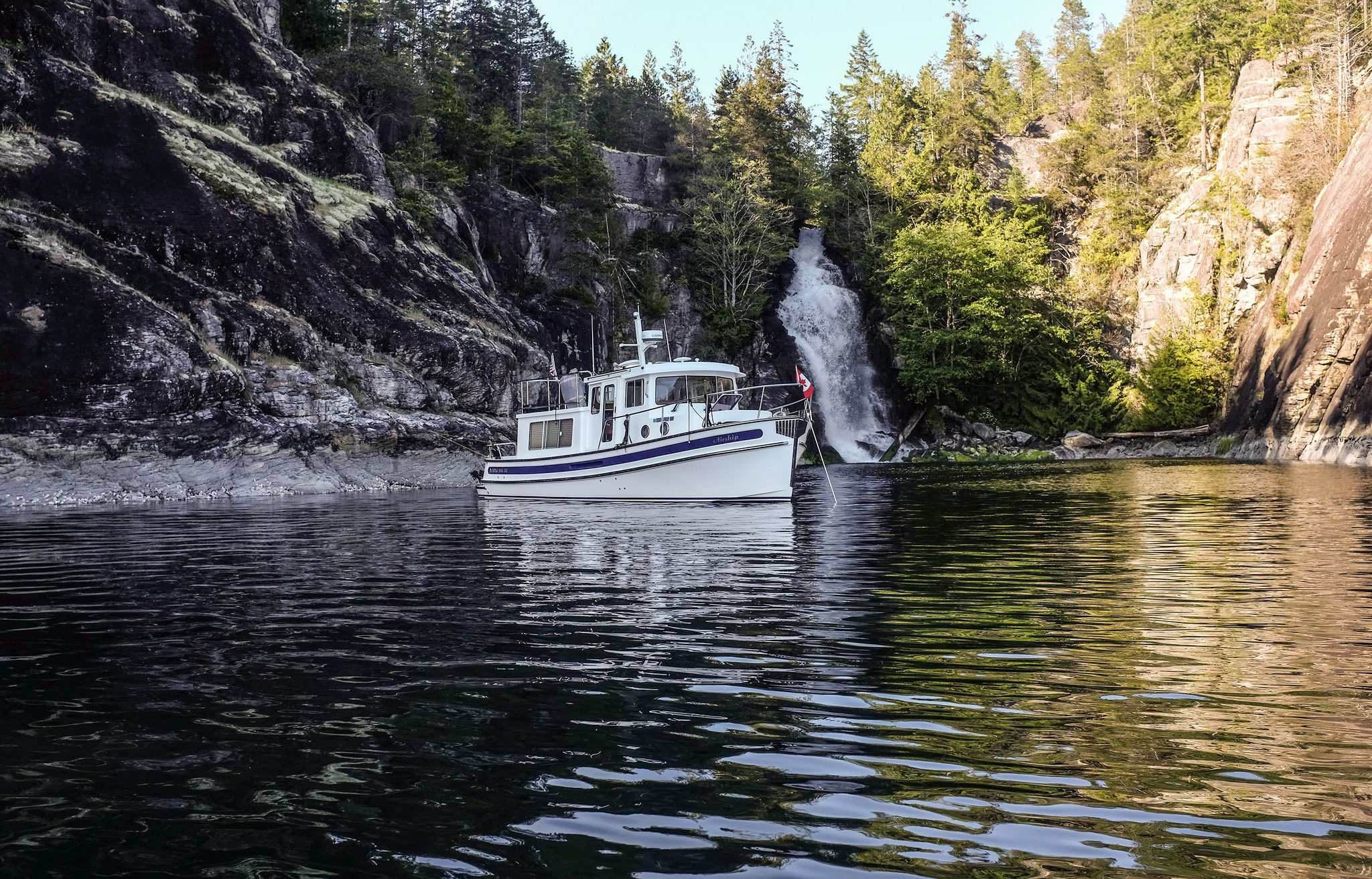
With an RV (and a lot of planning and local knowledge) you can boondock “away from it all” on public land, but it takes a lot more work to find a scenic, off-the-grid place to hang out. But, as with boating, if you camp in the off season, you can go to normally crowded places like this and not see another RV:
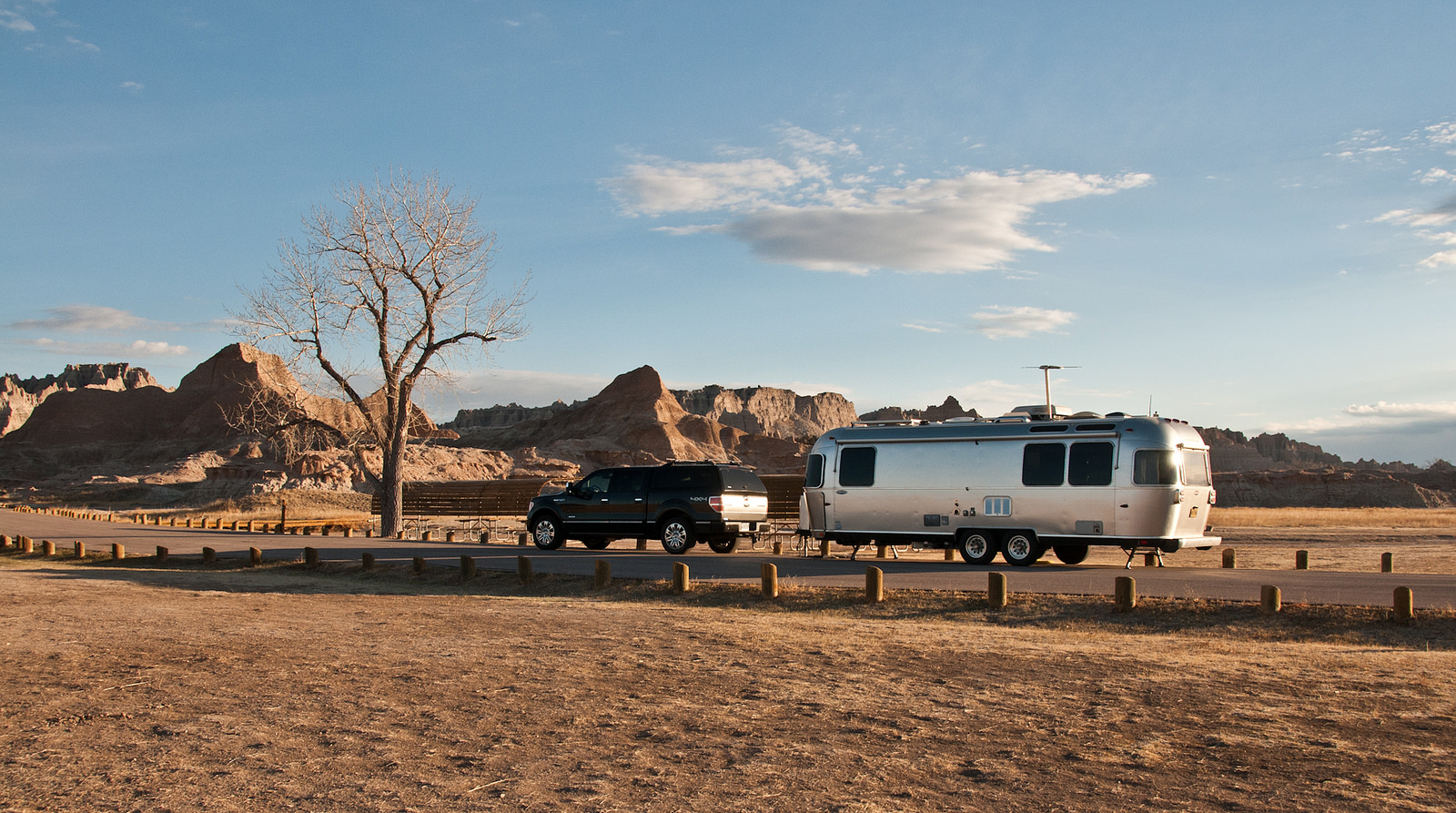
The boat has to bring its own outside space with it (upper deck, back cockpit, bow) but the Airstream gets to use the campground and surrounding area as its outdoor space.
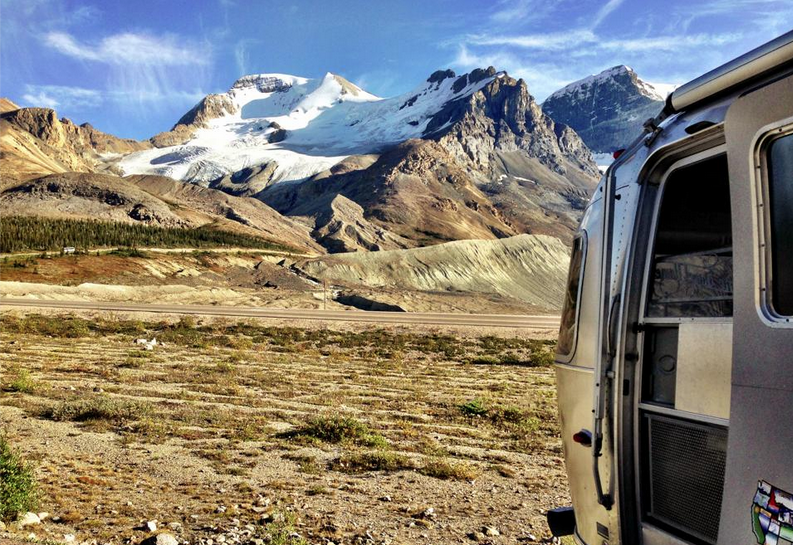
However, if you’re camped somewhere and it’s just raining and raining and raining (like the past few days here at the Oregon Coast), then your outdoor space is a bit more limited.
Freedom from roads is a definite plus with a boat.
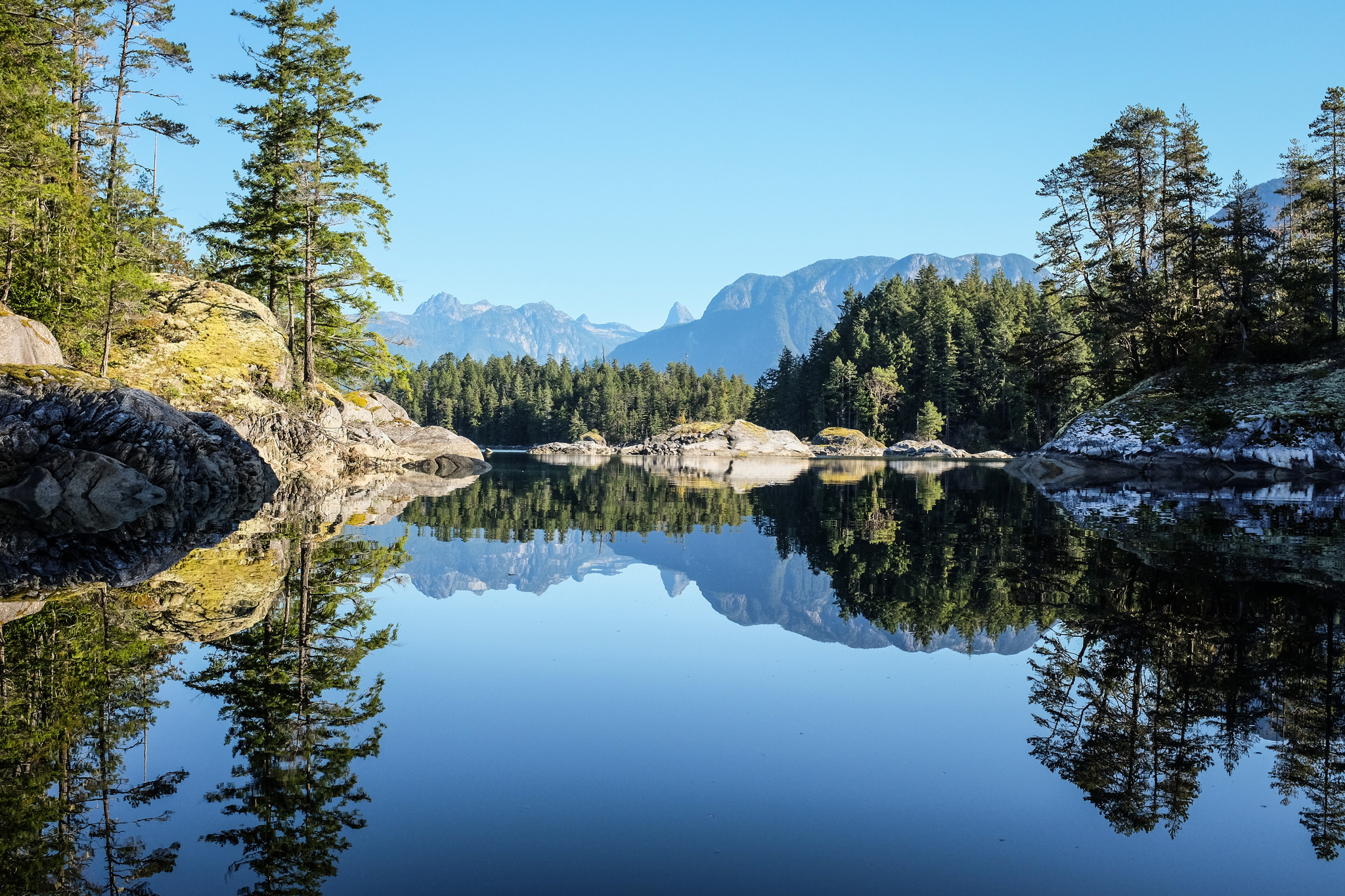
Overall, it’s great to have both. For the first couple years of boat ownership, I thought I’d never want to go anywhere besides the places our boat could take us, but now that we’re in the Airstream again the discussion about selling it has quietly faded. Instead, we’re talking about things like upgrading to lithium batteries, and maybe getting the same linen quilt we have on Airship….

